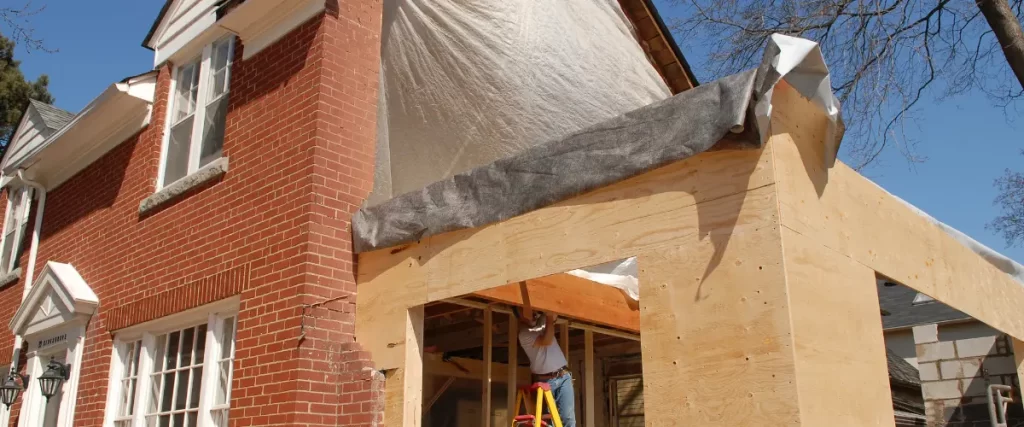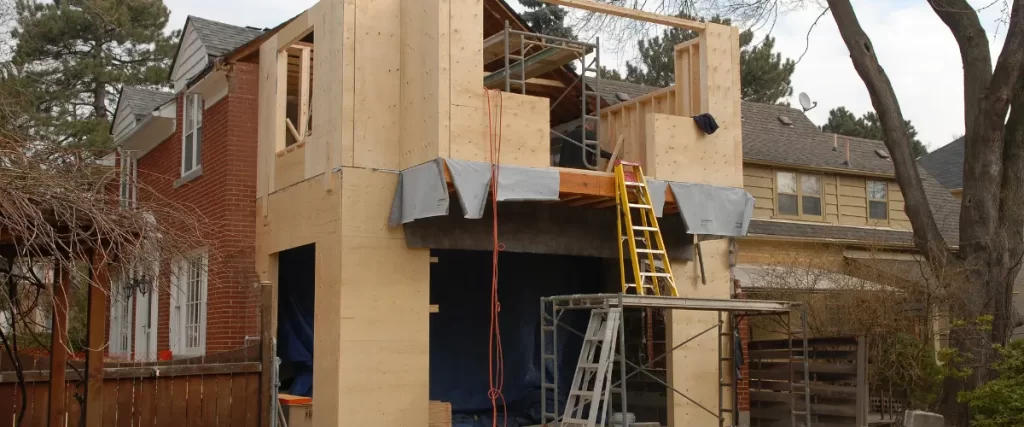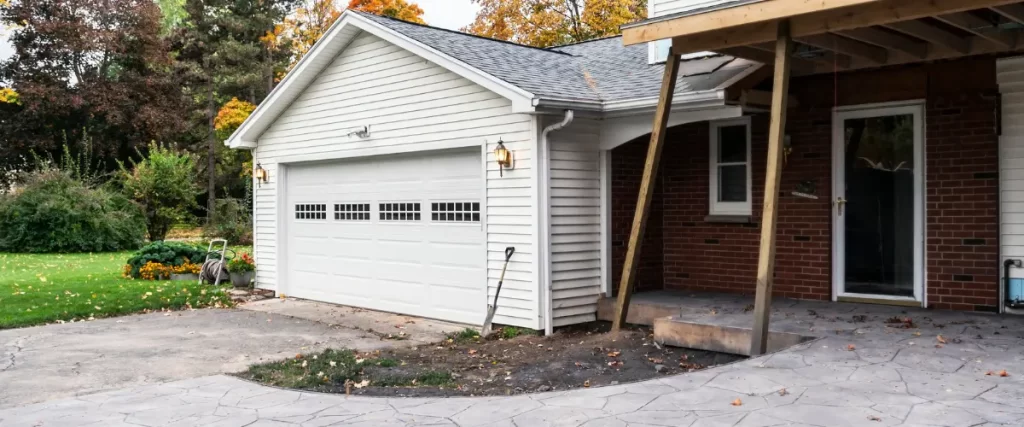If you live in Bear, DE, and you’ve been thinking about expanding your home—maybe adding that sunroom, bumping out the kitchen, or finally building the in-law suite—you’re not alone. Home additions are booming across New Castle County as families grow, work from home becomes more permanent, and property values rise. But there’s a wrinkle that trips up a lot of homeowners in Bear: flood zones.
Yep, it’s not just a coastal issue. Even though Bear isn’t sitting right on the bay, parts of it are in designated flood zones—and that can have a big impact on whether or not you can build onto your home.
Let’s dig into everything you need to know about building home additions in flood zones in Bear, DE. We’re going to cover FEMA regulations, county codes, floodplain maps, and what’s actually possible. And we’ll do it without drowning you in jargon (pun intended).
Why Flood Zones Matter for Home Additions in Bear, DE
Bear is a beautiful place to live—quiet neighborhoods, easy access to Route 1, great schools, and a nice balance between suburban comfort and nature. But it’s also home to several creeks, wetlands, and low-lying areas that are prone to flooding.
That includes communities near:
- Red Lion Creek
- Dragon Run
- C&D Canal feeder streams
- Small inland wetlands around Wrangle Hill and Porter Road
If your property falls within or even near a Special Flood Hazard Area (SFHA), things like permits, elevation requirements, and structural guidelines become more complex when you’re adding square footage to your home.

How to Know If Your Bear Property Is in a Flood Zone
Before you can even think about construction, you need to determine whether your property is in a floodplain. Here’s how to check:
- FEMA Flood Map Service Center – Enter your address here: https://msc.fema.gov/portal/home
- New Castle County GIS Mapping – The county offers a detailed property map: https://www.newcastlede.gov/262/GIS-Mapping
- Talk to the County Land Use Department – They can confirm your flood zone designation based on your parcel data.
Look for flood zones labeled AE, A, or VE. These are areas that have a 1% annual chance of flooding (aka the “100-year flood zone”).
Can You Build a Home Addition in a Flood Zone?
The short answer: Yes, but there are rules—and they’re strict.
Here’s a breakdown of what you’ll face if your property in Bear is located in or near a flood zone:
1. Elevation Requirements
Any new addition must be built above the Base Flood Elevation (BFE). This is the level FEMA says floodwaters are likely to reach during a major storm.
- If your home is below the BFE, you may need to elevate the addition—which could involve stilts, raised foundations, or fill dirt.
- Bear in mind, flood vents and specific foundation types may be required for compliance.
2. Substantial Improvement Rule
If your addition project (plus any other renovations in the past 10 years) totals more than 50% of your home’s market value, FEMA considers it a “substantial improvement.”
That triggers stricter requirements:
- Your entire home might need to be elevated or brought into compliance—not just the new section.
- This is a common stumbling block for Bear homeowners with older properties in low-lying zones.
3. Permit Requirements
You’ll need:
- A building permit from New Castle County
- Floodplain Development Approval
- Possibly an elevation certificate from a licensed surveyor
The county will want to see that your design complies with both IRC building codes and FEMA floodplain guidelines. And inspections will be mandatory at multiple phases of the build.

Local Floodplain Development Requirements in Bear, DE
New Castle County has its own floodplain management regulations that go above and beyond FEMA’s in some cases. For example:
- Fill material may be restricted in flood-prone areas to preserve natural water flow.
- Enclosed spaces below BFE must be strictly non-livable (think storage or parking only).
- You may be asked to submit hydraulic and hydrologic studies if your project could alter drainage or nearby flood patterns.
To learn more, check out the New Castle County Floodplain Ordinance here.
What If My Property Is Only Near a Flood Zone?
Even if your parcel technically falls outside the floodplain boundary, building codes in Bear may still require:
- Flood-resistant materials
- Soil engineering reports
- Adjusted setback distances
The proximity to streams and marshlands—common in Bear—often leads to buffer zones where construction is more heavily regulated to avoid environmental disruption.
So don’t just assume you’re good to go because FEMA didn’t shade your lot blue.
Workarounds and Solutions If You’re in a Flood Zone
If your home in Bear is in a flood zone, you still have options. Here are a few ways to approach an addition without triggering a regulatory nightmare:
Build Vertically
Add a second story instead of expanding horizontally. You avoid disturbing the floodplain and stay compliant.
Use Open Foundations
Pier-and-beam or column-supported foundations allow water to pass underneath and reduce flood risk.
Create Detached Additions
Building a garage, shed, or studio on a separate pad (away from flood-prone areas of your lot) can bypass some restrictions.
Raise Existing Structures
In some cases, you can elevate your entire home to bring it above BFE, then build your addition. It’s a major project but possible.
Best Building System Manufacturers for Flood Zone Additions
When building in flood zones, you need materials and systems designed to resist moisture, rot, and pressure changes. These manufacturers offer solutions ideal for home additions in Bear, DE’s flood-prone zones.
Best Flood-Resistant Building System Providers
These companies provide strong, code-compliant systems for elevated foundations and water-resistant structures.
- Floodproofing.com – Specializes in flood vents, dry floodproofing barriers, and FEMA-compliant building materials.
- SmartVent – Known for engineered flood vents that meet NFIP and FEMA standards, essential for venting raised foundations.
- Superior Walls – Offers precast concrete foundation systems ideal for flood-prone basements and additions.
- LiteForm Technologies – Delivers insulated concrete forms (ICFs) that are flood-resistant and energy-efficient.
- BASF Master Builders – Produces waterproof concrete systems and additives designed for floodplain construction.
FAQs – Home Additions & Flood Zones in Bear, DE
Can I add a second floor to my home in a flood zone?
Yes, vertical additions are often encouraged as they don’t impact ground-level floodplain flow.
Do I need flood insurance if I build in a flood zone?
If you’re in an AE or VE zone and have a mortgage, yes—it’s federally required.
What if my house is grandfathered in below BFE?
You can keep it as-is, but any major addition may trigger elevation or compliance requirements.
How long does it take to get permits for flood zone construction in Bear?
Expect a longer timeline—4 to 8 weeks depending on the complexity and whether studies are required.
Is it more expensive to build in a flood zone?
Yes. Elevated foundations, special materials, engineering studies, and insurance can increase total project costs.

Final Thoughts: Plan Smart Before You Build
If you’re planning a home addition in Bear, DE, and your property is in or near a flood zone, the best advice is: do your homework before you design anything. Start by checking your flood zone designation, talk to New Castle County’s Land Use department, and get input from a contractor experienced in floodplain development.
The right preparation can mean the difference between a smooth project and a costly delay—or worse, a denied permit.
Still have questions or want to explore your options? Contact us at (302) 437-5799, and we’ll walk you through what’s possible for your home addition in Bear, no pressure. Just helpful advice to get you moving in the right direction.
